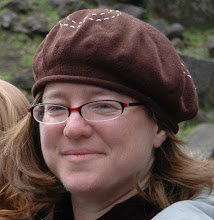Gravestone Symbols: the Hand of God
 According to Maimonides' Guide for the Perplexed, belief in the corporeality of God is a heresy. Why then do gravestones from the Jewish Atlantic World often feature the hand of God cutting down the tree of life? In even more extreme cases, God was presented on gravestones as a fully anthropomorphized figure, such as on the gravestone of Samuel Senior Teixeria (Amsterdam 1717), and the gravestones of Yosiyahu Raphael Castillo (Barbados, 1698) and Esther Hana de Meza (Cassipora Cemetery, Suriname 1745).
According to Maimonides' Guide for the Perplexed, belief in the corporeality of God is a heresy. Why then do gravestones from the Jewish Atlantic World often feature the hand of God cutting down the tree of life? In even more extreme cases, God was presented on gravestones as a fully anthropomorphized figure, such as on the gravestone of Samuel Senior Teixeria (Amsterdam 1717), and the gravestones of Yosiyahu Raphael Castillo (Barbados, 1698) and Esther Hana de Meza (Cassipora Cemetery, Suriname 1745). The Hand of God has a long history in Jewish art. One of the earliest examples has been found in the wall paintings of the Synagogue at Dura Europos. Created around 244 CE, the synagogue at Dura Europos (Syria) was uncovered by archaeologists in 1932. The rich wall paintings were remarkably well preserved, because the synagogue had been filled in with dirt in an effort to protect the town from a Persian attack in 256 CE. Although at first the artwork made archaeologists skeptical skeptical that the structure was Jewish, today the wall decorations are considered one of the most famous examples of early synagogue art. Many of the frescoes are widely reprinted, particularly a Purim Procession featuring Mordechai. Less commonly reprinted, and perhaps more troubling, is the Akeidah (binding of Isaac) scene from above the Torah niche which features the hand of God staying the sacrifice (figure above at right).
The Hand of God has a long history in Jewish art. One of the earliest examples has been found in the wall paintings of the Synagogue at Dura Europos. Created around 244 CE, the synagogue at Dura Europos (Syria) was uncovered by archaeologists in 1932. The rich wall paintings were remarkably well preserved, because the synagogue had been filled in with dirt in an effort to protect the town from a Persian attack in 256 CE. Although at first the artwork made archaeologists skeptical skeptical that the structure was Jewish, today the wall decorations are considered one of the most famous examples of early synagogue art. Many of the frescoes are widely reprinted, particularly a Purim Procession featuring Mordechai. Less commonly reprinted, and perhaps more troubling, is the Akeidah (binding of Isaac) scene from above the Torah niche which features the hand of God staying the sacrifice (figure above at right).Whereas the hand in the Dura Europos fresco prevents a death, the hands featured on the tombstones from the Jewish Atlantic World usually represent a life being ended. The motif can also be found in Kabbalistically-influenced Jewish cemeteries in Eastern Europe from the same era, though more commonly a flower is being picked, rather than a tree cut down. This is probably an
 illustration of the verse from Shir haShirim (Song of Songs) 6:2, “My beloved has gone down into his garden…to gather lilies.” Ruth Ellen Gruber provides an example from the Sadagora Cemetery in the Ukraine of the flower motif. The cut flower motif can also be found on gravestones in the Jewish Atlantic World, usually for those who died young, and occasionally the hand of God is replaced either by a putto (as in the example at the left from the gravestone of Marius Penso (1889, Beit Haim Berg Altena, Curacao; photograph Laura Leibman) or the angel of death (see example below)
illustration of the verse from Shir haShirim (Song of Songs) 6:2, “My beloved has gone down into his garden…to gather lilies.” Ruth Ellen Gruber provides an example from the Sadagora Cemetery in the Ukraine of the flower motif. The cut flower motif can also be found on gravestones in the Jewish Atlantic World, usually for those who died young, and occasionally the hand of God is replaced either by a putto (as in the example at the left from the gravestone of Marius Penso (1889, Beit Haim Berg Altena, Curacao; photograph Laura Leibman) or the angel of death (see example below)Although cut flowers also represent a life cut short, the cutting of the tree has a slightly different resonance. As scholar Aviva Ben-Ur notes, the tree of life has particular importance in Jewish mysticism. As "an ancient, widespread symbol representing the `promise of immortality and everlasting youth,'" the tree of life "variably signifies in Jewish tradition Judgment, the return to Edenic paradise, the future Temple, and Messianic Jerusalem" (Still Life: Sephardi, Ashkenazi, and West African Art and Form in Suriname’s Jewish Cemeteries, 56).
Detail of Gravestone of David Raphael Hoheb (1756)
Old Sephardi Cemetery, Paramaribo, Suriname.
Photo by Laura Leibman.
Old Sephardi Cemetery, Paramaribo, Suriname.
Photo by Laura Leibman.
Scholars have offered several explanations for the hand of God motif including Kabbalism, conversos' Catholic upbringing, the antinomian ("against the law") influence of the messianism practiced by Sabbatai Tzvi, and the lack of religious rigor in the colonies. I am curious what explanation seems most likely to readers of this blog.
Posted under:
Angels,
Beit Haim Bleinheim,
Caribbean,
Cemeteries,
Converso,
Curacao,
Jewish,
Jewish Themes,
Kabbalism,
Messianism,
Sabbatai Tzvi,
Sephardic
Dated:
12:22 AM




0 Responses to “Gravestone Symbols: the Hand of God”: